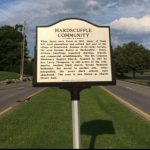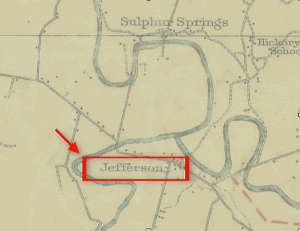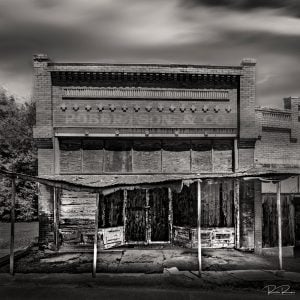When my wife and I first moved to Brentwood, we quickly discovered that Church Street East provided a convenient way to avoid the more congested Old Hickory Boulevard. During one of our early outings, we  noticed the “Hardscuffle Community” historic marker in the Church Street East median and came to learn that in the years following the Civil War, Hardscuffle was originally established when newly-freed slaves began building homes and building their lives there as free citizens. Hardscuffle, known for its rocky terrain, had a school, churches and a baseball field, and was home to about 50 families. In the 1960s, the newly constructed I-65 cut through the original village of Brentwood, property values rose, and the Hardscuffle families started selling their property. Other than the historical marker, virtually nothing remains today to indicate the community ever existed.
noticed the “Hardscuffle Community” historic marker in the Church Street East median and came to learn that in the years following the Civil War, Hardscuffle was originally established when newly-freed slaves began building homes and building their lives there as free citizens. Hardscuffle, known for its rocky terrain, had a school, churches and a baseball field, and was home to about 50 families. In the 1960s, the newly constructed I-65 cut through the original village of Brentwood, property values rose, and the Hardscuffle families started selling their property. Other than the historical marker, virtually nothing remains today to indicate the community ever existed.
Other towns have vanished from the map to make way for new lakes. I grew up in South Nashville’s Priest Lake community and have heard stories about the towns that lie beneath Percy Priest Lake. One such town was Jefferson, established in 1803.  Jefferson was the county seat of Rutherford County before Murfreesboro was even incorporated. Around the early 1960s, after the residents of Old Jefferson were told their town would be under water when the new Percy Priest Lake was created, the land was bought up and many of the houses burned down. However, as the basin flooded, Percy Priest Lake did not spread as far south as originally expected, and as a result, Old Jefferson was never actually flooded out.
Jefferson was the county seat of Rutherford County before Murfreesboro was even incorporated. Around the early 1960s, after the residents of Old Jefferson were told their town would be under water when the new Percy Priest Lake was created, the land was bought up and many of the houses burned down. However, as the basin flooded, Percy Priest Lake did not spread as far south as originally expected, and as a result, Old Jefferson was never actually flooded out.
Unfortunately, most of it had already been destroyed. Now, the nearby Jefferson Springs Natural Area attracts both history buffs and water enthusiasts, and it is rumored that you can still find remnants of the town that was burned down in anticipation of a flood that never came. Tennessee is full of lakes, most of which were man-made, so there are a number of these underwater ghost towns around the state, such as once-thriving Morganton, which is now submerged by Tellico Lake in Loudon County; and Loyston in Union County, which was inundated by the Clinch River after the completion of Norris Dam in the 1930s.
In addition to the long-forgotten lake and river towns of Tennessee, a number of railroad ghost towns have been left behind as well. The lumber industry around Lost Cove Settlement, situated on the border of East Tennessee and North Carolina, attracted the railroad in the early 1900s, a significant logging operation was built, and the town prospered. However, Lost Cove Settlement started declining as the timber ran out, and ultimately, the town’s last family left around 1957. Only the old town cemetery and a few abandoned structures remain today.
 I realize that abandoned towns are not unique to Tennessee, but that Hardscuffle historic marker sparked my curiosity about the ones close to home. As a photographer, I have often found a certain beauty in things abandoned, from a photographic standpoint. Now, I find a little deeper appreciation for the residents of those long-forgotten towns, especially the ones that found a way to build a community at a time when it may have seemed impossible. Hats off to them, for they helped shaped the Nashville area we know and love today.
I realize that abandoned towns are not unique to Tennessee, but that Hardscuffle historic marker sparked my curiosity about the ones close to home. As a photographer, I have often found a certain beauty in things abandoned, from a photographic standpoint. Now, I find a little deeper appreciation for the residents of those long-forgotten towns, especially the ones that found a way to build a community at a time when it may have seemed impossible. Hats off to them, for they helped shaped the Nashville area we know and love today.




